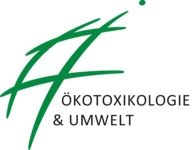Effects of copper in Daphnia are modulated by nanosized titanium dioxide and natural organic matter: what is the impact of aging duration?
ENVIRONMENTAL SCIENCE AND POLLUTION RESEARCH.
ISBN/ISSN: 0944-1344
Publikationstyp: Zeitschriftenaufsatz
Doi/URN: 10.1007/s11356-020-11578-2
| Geprüft | Bibliothek |
Inhaltszusammenfassung
During its aquatic life cycle, nanosized titanium dioxide (nTiO(2)) may interact with natural organic matter (NOM) ultimately altering the ecotoxicity of co-occurring chemical stressors such as heavy metals (e.g. copper (Cu)). In this context, the following hypotheses were tested: (1) aging of nTiO(2) along with Cu reduces Cu toxicity, (2) nTiO(2) agglomerates have a lower potential to reduce Cu toxicity and (3) aging of nTiO(2) in presence of NOM reduces Cu toxicity further. A multifactorial...During its aquatic life cycle, nanosized titanium dioxide (nTiO(2)) may interact with natural organic matter (NOM) ultimately altering the ecotoxicity of co-occurring chemical stressors such as heavy metals (e.g. copper (Cu)). In this context, the following hypotheses were tested: (1) aging of nTiO(2) along with Cu reduces Cu toxicity, (2) nTiO(2) agglomerates have a lower potential to reduce Cu toxicity and (3) aging of nTiO(2) in presence of NOM reduces Cu toxicity further. A multifactorial test design crossing three nTiO(2) levels (0.0, 0.6 and 3.0 mg/L) with two levels of NOM (0 versus 8 mg total organic carbon (TOC)/L) and seven nominal Cu concentrations (ranging from 0 to 1536 mu g/L) aged in ASTM medium for 0, 1, 3 and 6 days was realised, while two aging scenarios were applied (type 1: nTiO(2) jointly aged with Cu; type 2: Cu added after nTiO(2) aging). Subsequently, Cu toxicity was assessed using the immobility of Daphnia magna after 48 h of exposure as response variable. The experiments revealed that neither aging duration nor the extent of agglomeration (type 1 vs. type 2 aging) has a substantial impact on Cu induced toxicity. Moreover, it was confirmed that the presence of NOM substantially reduced Cu induced toxicity, independent of the aging scenario and duration. More importantly, the data suggest the ingestion of Cu loaded nTiO(2) as additional exposure pathway contributing to Cu toxicity. In conclusion, it seems unlikely that nTiO(2) concentrations currently detected in or predicted for aquatic ecosystems, which are at least one order of magnitude below the concentration tested here, influence Cu toxicity meaningfully. » weiterlesen» einklappen
Autoren
Verknüpfte Personen
- Ralf Schulz
- Mitarbeiter/in
(Institut für Umweltwissenschaften Landau)
- Mirco Bundschuh
- Mitarbeiter/in
(Institut für Umweltwissenschaften Landau)

